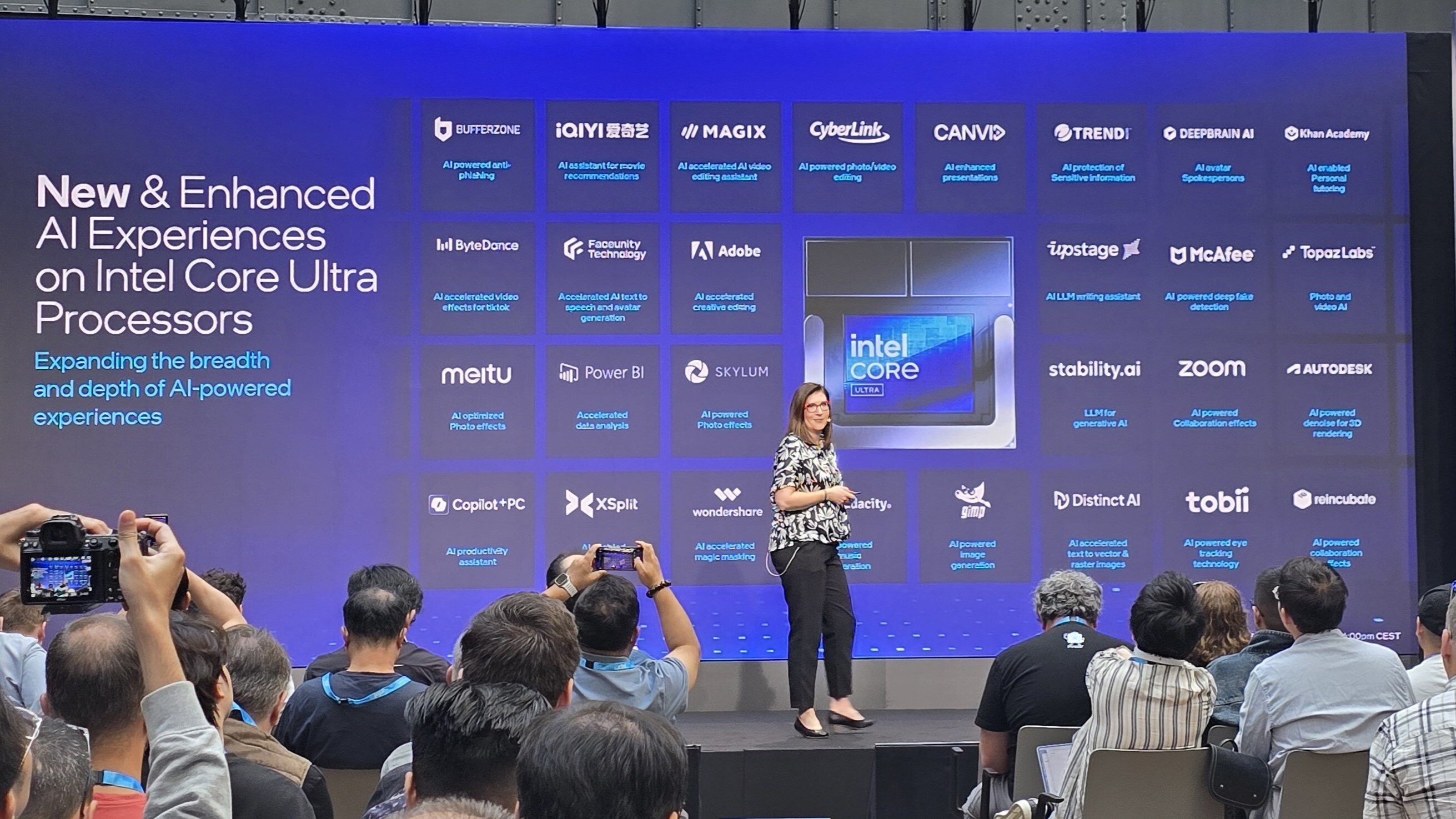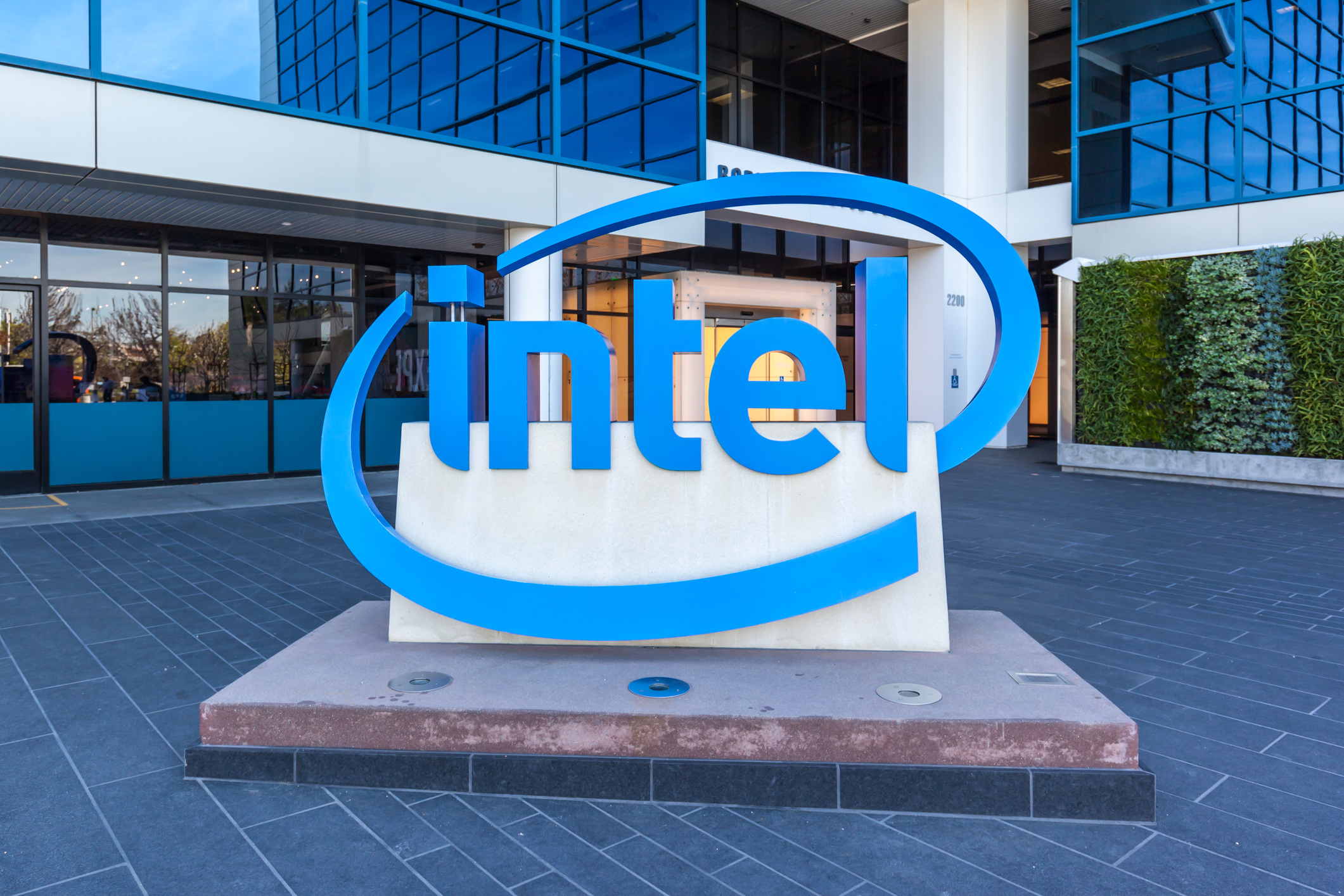Intel’s new Core Ultra 200V launch highlights the opportunity for independent software vendors (ISVs) to drive innovation with feature-rich applications.
In Berlin this week, Intel unveiled its latest PC processor, the Core Ultra 200V, designed specifically to enable artificial intelligence on ultra-thin PCs. Developed under the code-name Lunar Lake, the new processor offers higher processing speeds and lower energy consumption than previous iterations of the x86 architecture.
Intel is known for its focus on technical specifications, and the Core Ultra 200V launch was packed with benchmark comparisons that silicon enthusiasts appreciate. Processing performance is up 40% over previous models. The built-in graphics processor boasts speeds 30% to 50% higher than comparable chips, while the neural processing unit handles workloads with 30% less power consumption, enabling notebooks to achieve full-use battery life of up to 20 hours.
At the launch event, many of Intel’s longtime PC OEM partners — including Asus, Dell, HP, Lenovo, and Samsung — announced plans to release notebooks powered by the Lunar Lake processor, with many models expected to be available by the end of September. Google also revealed that Chromebooks running AI-based applications will be powered by the new chips.
While the focus of the event was on the technical capabilities of the Core Ultra 200V, Intel and its OEM partners repeatedly emphasized the importance of their respective ecosystems, particularly independent software vendors (ISVs), which are developing applications to fully leverage the processing power of the new chips.
AI Innovations and the Silicon Driving Machine Upgrades
As AI becomes an integral part of computing, innovations in the silicon that powers new applications will give both business and consumer buyers strong reasons to replace their existing machines with AI-enabled notebooks. According to Carla Rodriquez, Intel’s vice president of ecosystem enablement, the performance and features delivered by the Core Ultra 200V and similar processors will offer experiences that simply aren’t possible with legacy PCs.
“People will want the features and performance they can’t get from older machines,” Rodriquez explained during the event. Whether it’s AI-enhanced productivity tools, real-time language translation, or more advanced AI-powered security features, the shift to AI-driven processing will make older PCs feel obsolete. As a result, businesses aiming to stay competitive and consumers seeking the latest functionality will be prompted to upgrade their systems.
Over the past year, PC manufacturers have signaled the arrival of AI-enabled products, with many announcements centered on their ability to run AI applications such as ChatGPT locally rather than through cloud services. Dell and Microsoft, for example, introduced a “Copilot” button to easily activate AI chat functions. The emphasis on GPT has led many partners and customers to believe that this is the primary use case for AI-enabled PCs.
As Intel and others explained, however, the new processors coming to market are designed not only to maximize processing and power efficiency but also to optimize application performance, providing users with a high-quality experience. The processors require tighter coordination and collaboration between chipmakers and ISVs to ensure applications effectively leverage AI-enabled processors.
Intel and other chipmakers have always worked closely with ISVs and application developers. However, the AI era has heightened the need for earlier collaboration and advanced disclosure of new processor capabilities to software partners, according to Rodriquez.
Intel is collaborating directly with its top 100 ISVs, including companies such as Adobe, Autodesk, Trend Micro, and Zoom, to create new applications optimized for chips like Lunar Lake. These ISVs receive dedicated engineering resources, development kits, and marketing support. For the thousands of other ISVs within the Intel ecosystem, the company provides software development kits and on-demand resources for application creation. Additionally, Asus, HP, and Samsung have created their own development kits to enable ISVs in their respective ecosystems to write applications optimized for Core Ultra 200V.
Several of Intel’s ISV partners at the launch event praised the chipmaker for the support, resources, and communication it provides in software development and product design. They noted that the information-sharing helps them prepare and create new application features that align with market expectations and product launch windows.
But tight collaboration between chipmakers and ISVs isn’t unique to Intel. Rivals AMD, Nvidia, and Qualcomm are also realigning their collaboration efforts with ISVs and integrator partners to enhance awareness of capabilities and application design, creating new features and innovations.
AI Use Cases Beyond ChatGPT
One example of advanced AI-enabled capabilities is local processing of security scans. Eric Shulze, vice president of product management at Trend Micro, explained how processors like the Core Ultra 200V enable local security inspections without the need to send data to the cloud — a capability that wasn’t possible with previous processor generations.
In the public consciousness, artificial intelligence is still mostly associated with applications like ChatGPT and Microsoft Copilot. Detailed use cases for AI-enabled PCs have been limited and nonspecific. Intel and PC manufacturers at the Berlin event pointed out that many AI innovations aren’t immediately visible to users; in many cases, the AI capabilities improve user experiences through optimized applications rather than overt AI features.
While Intel is focused on bringing more powerful and capable processors to market to fuel the AI generation, the real magic that shapes perceptible user experiences will come from the ISV community as ISVs create applications that drive user adoption, powering sales through resellers and retailers.
Larry Walsh is the CEO, chief analyst, and founder of Channelnomics. He’s an expert on the development and execution of channel programs, disruptive sales models, and growth strategies for companies worldwide.




